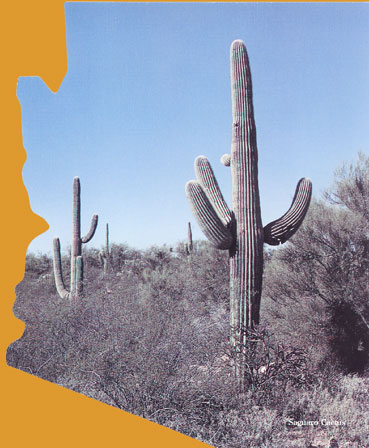
"Saguaro Cactus. The saguaro cactus, native only to southern Arizona and Sonora, Mexico, can grow to a height of 50 feet and weight over 10 tons. Holes commonly found in this giant cactus were probably initially bored by the gila woodpecker. These various cavities subsequently become ideal refuges for a host of other desert species, including the elf owl. The bloom of the saguaro, which comes forth only at night, is designated as the Arizona state flower."
Arizona Die-Cut Cards (r), Copyright 1998.
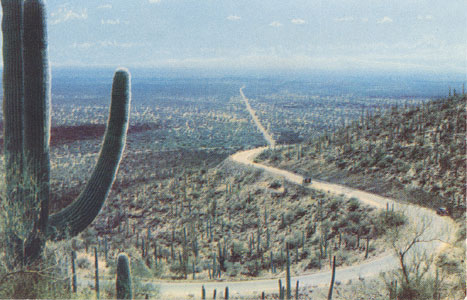
"L135-- Mt. Lemmon Road--This excellent black-topped road connects Tucson with the top of Mt. Lemmon, an all-year recreation area in a virgin pine forest. The return trip, with Tucson faintly discernable in the haze across the Saguaro-studded desert is particularly interesting."
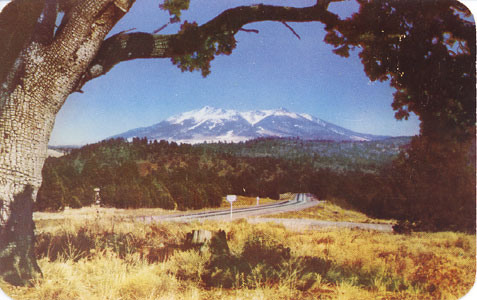
"Snow-Covered San Francisco Peaks - mythical home of the Kachina Gods, on Route 66 near Flagstaff, Arizona." Post Car No. K54, postmarked August 1953.
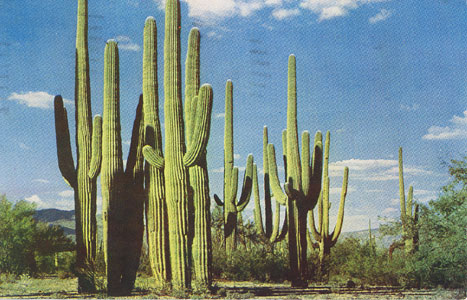
"Family Group of Saguaros. Symbolic of the desert and all its mystery are the Giant Cacti whose grotesque silhouettes add character to the Southern Arizona landscape. They attain heights of 50 feet and the ages of some have been estimated at 250 years. The blossom of the Saguaro is the State Flower of Arizona. -- L160." Postmarked Feb. 4, 1957.
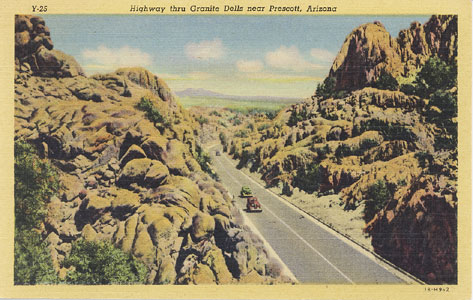
"Highway thru GraniteDells near Prescott, Arizona. U. S. Highway 89, principal route between southern Arizona points, Oak Creek Canyon and the Grand Canyon, passes through the heart of this peculiarly weathered rock formation just a few miles north of Prescott." Post Card No. Y-25, 1B-H962.
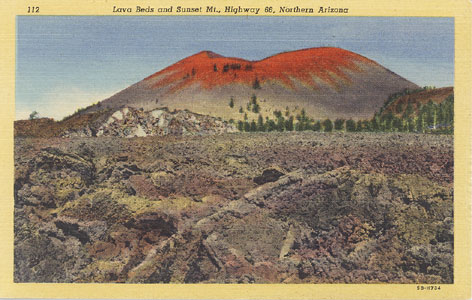
"Lava Beds and Sunset Mt., Highway 66, Northern Arizona" Card No. 112, 5B-H734. "Lava Beds and Sunset Mountain, Highway 66 - Northern Arizona. This mountain, an extinct volcano seen on the north side of the highway for many miles, appears to be flooded with sunset light even on cloudy days. The Ice Caves and Lava beds surrounding it are visited by thousands of tourists yearly."
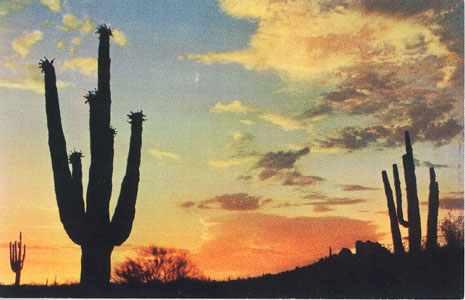
"Desert Sunset. No moment is so reverent as sun-set in the west. Here the blending of the desert and the sky create an awesome spectacle the observer won't soon forget."
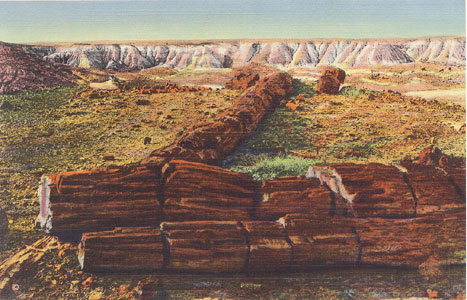
"P.F. 32 The Twin Sisters (In Second Forest) Petrified Forest, Arizona. These prostrate logs are known as the 'twin sisters' due to their similarity in size and coloring. The second forest is noted for the minute detail and grain of the wood, readily seen under the microscope, and in amany cases with the naked eye." One-cent Post Card postmarekd October 2, 1951.
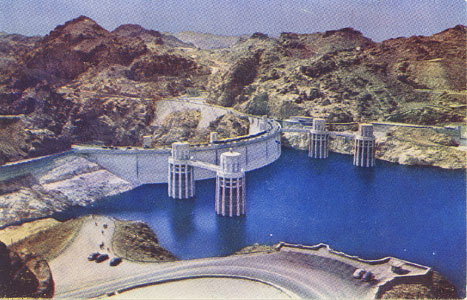
"C553 -- Upstream Face of Hoover (Boulder) Dam -- Showing intake towers and reservoir with the Arizona Lookout Point in the foreground."
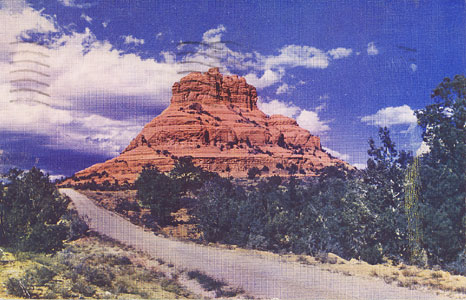
"C646 -- Bell Rock, Lower Oak Creek Canyon -- One of the outstanding rock formations in this beautifully colored valley." One-cent Post Card, postmarked October 2, 1951.
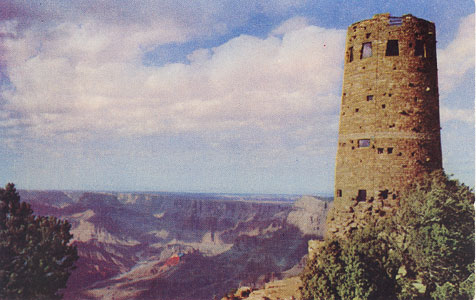
"The Watchtower at Desert View, Grand Canyon National Park, Arizona. On the South Rim is this spectacular Indian watchtower, built in the style of Pueblo Indian buildings. From it a panoramic view of the canyon and the Painted Desert is possible." Post Card No. K265.
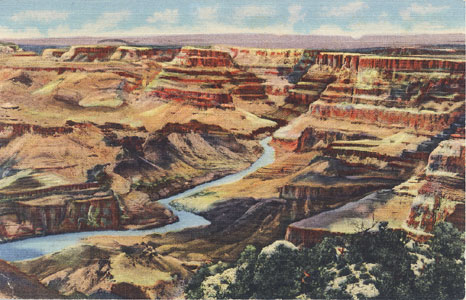
"GC-10 -- Looking North From the Watch Tower at Desert View. Don't miss seeing the Canyon from the Watch Tower, from which one can look for miles up the turbulent Colorado River with an ecellent view of the North Rim and the Painted Desert." One cent Post Card, Postmarked October 2, 1951.

Copyright 2000-2007, Texas Water Towers Dot Com. All Rights Reserved.